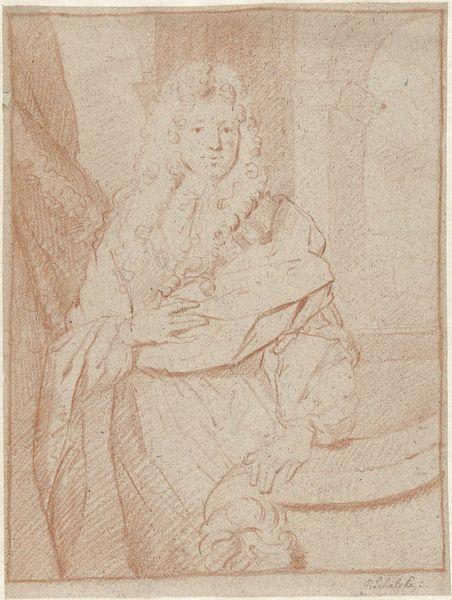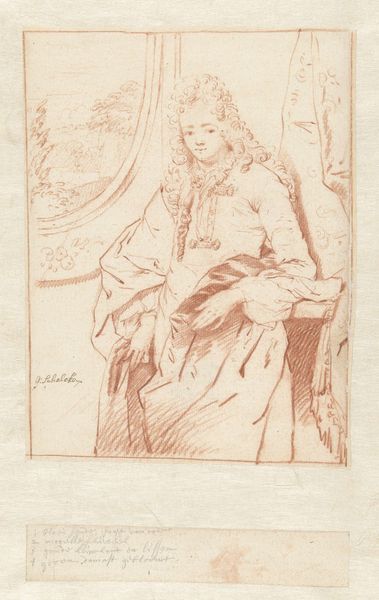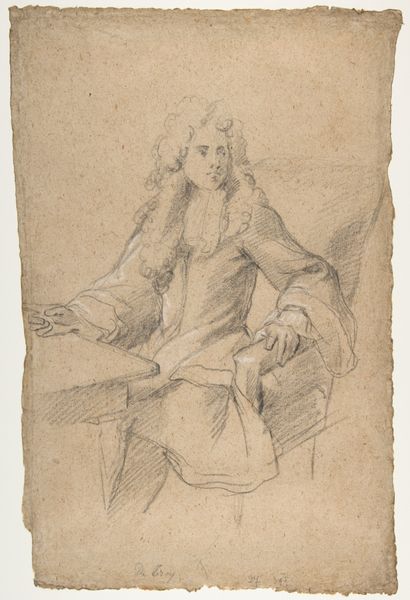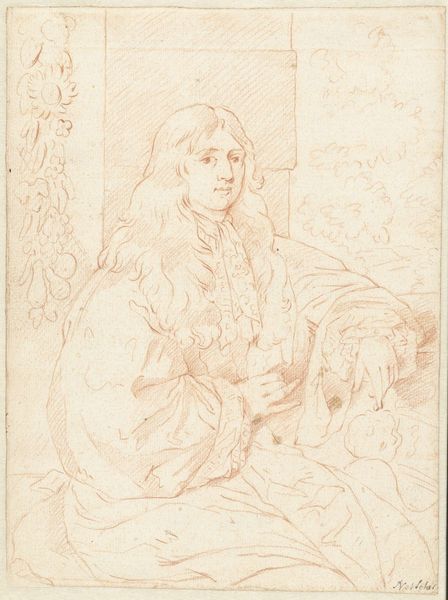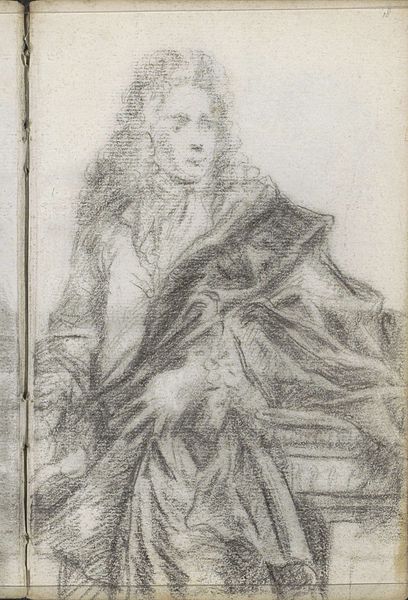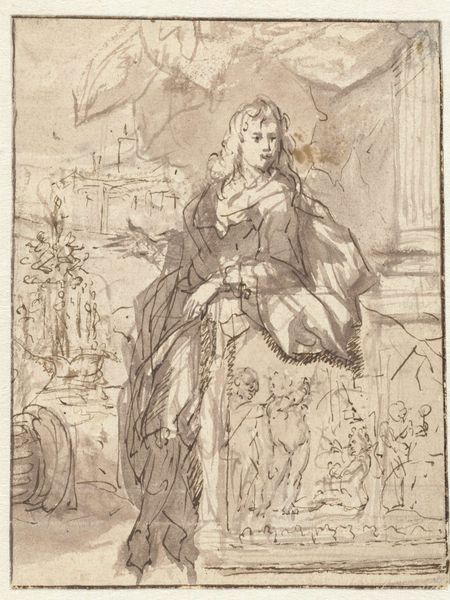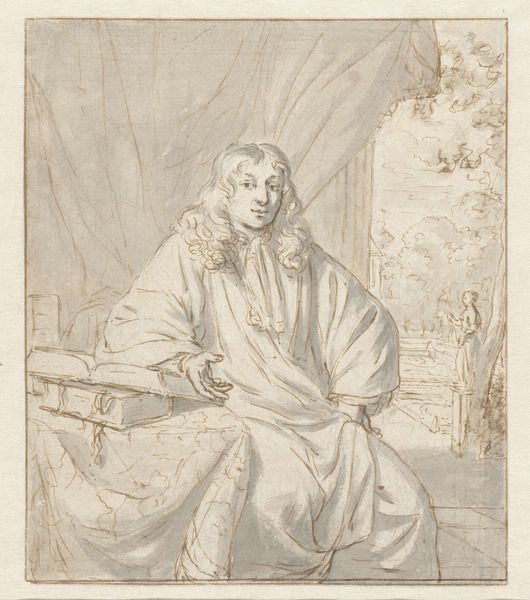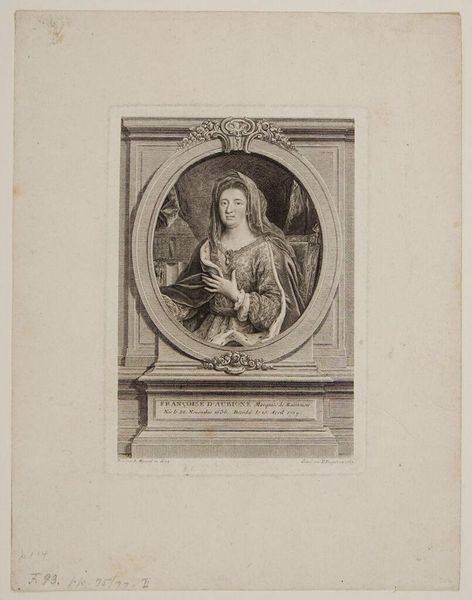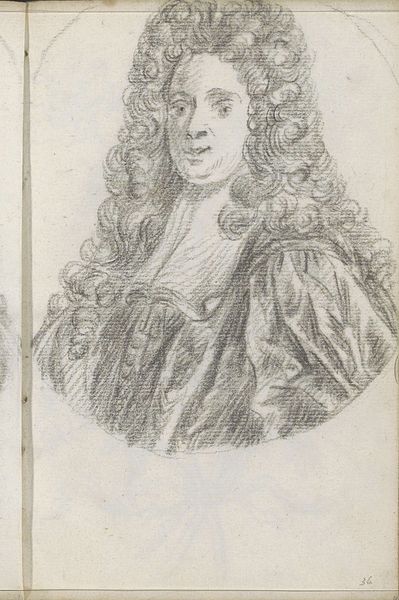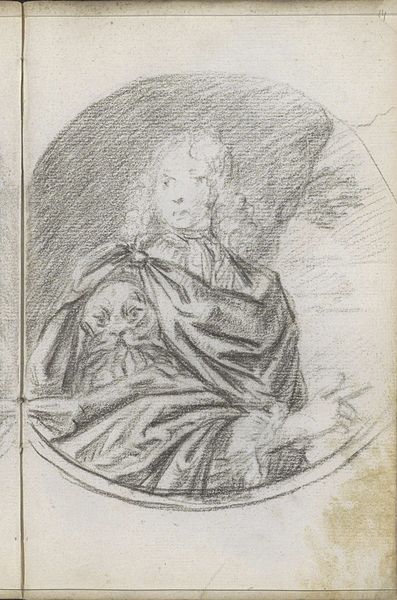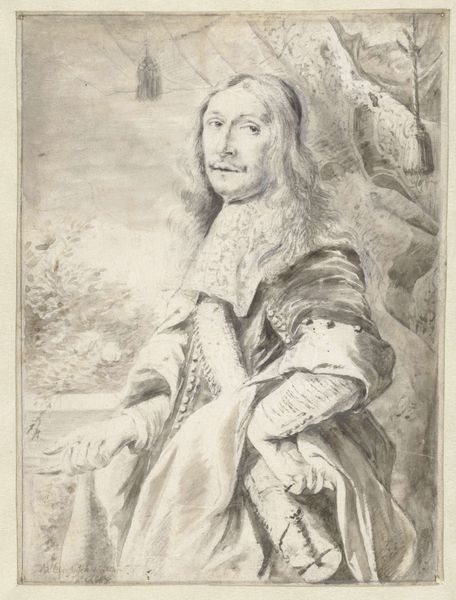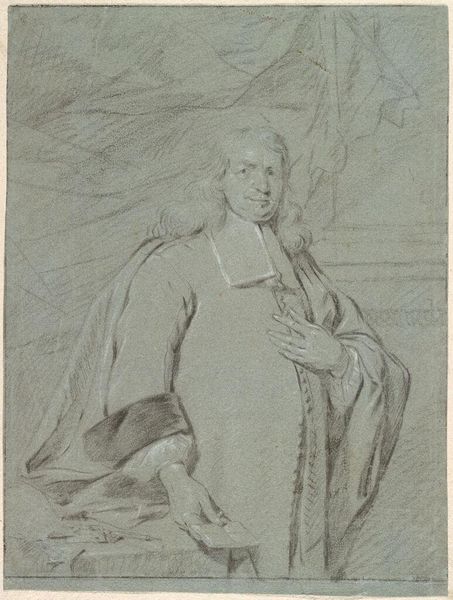
drawing, pencil
#
portrait
#
drawing
#
baroque
#
charcoal drawing
#
pencil drawing
#
pencil
#
portrait drawing
#
academic-art
Dimensions: height 279 mm, width 237 mm
Copyright: Rijks Museum: Open Domain
Editor: So, this drawing is called "Portret van een onbekende staande man," or "Portrait of an Unknown Standing Man," made sometime between 1649 and 1684 by Caspar Netscher. It's pencil on paper, a really lovely sanguine color. What jumps out to me is how…posed it feels, and how carefully the man's status is being presented. What's your take on it? Curator: Indeed. The portrait encapsulates the performance of status that was increasingly important during this period. Netscher’s career itself charts a shift in artistic patronage and the burgeoning art market. Consider the 'unknown' sitter – likely part of the Dutch bourgeoisie, keen to emulate aristocratic displays of power through portraiture. Does this shift away from traditional aristocratic patronage have implications on how artists approach subject matter, style, and medium? Editor: That’s a really interesting point about the sitter being unknown, and therefore likely not aristocracy, but wanting to emulate it! I guess they wanted to be perceived as part of the elite, which could definitely influence the artist’s choices. Curator: Exactly. The almost performative air—notice the affected pose and lavish costume—can be read as a consequence of this new social dynamic where identity, particularly concerning the aspirational middle class, was fluid and performable. How do you think the use of drawing, a more accessible medium, contributed to the broader dissemination of such images? Editor: It's like portraiture became more democratized. Instead of only the super-rich commissioning oil paintings, more people could afford a drawing. Maybe this contributed to that "performance" element you mentioned; making status symbols more widely available? Curator: Precisely. Netscher wasn’t just depicting a man; he was participating in the construction of a social ideal, and the dissemination of new aspirational identities. Editor: I never thought about portraiture as a driver of social change before. That really changes how I see these works now. Curator: The true value lies not just within the frame but in what the frame reflects about society.
Comments
No comments
Be the first to comment and join the conversation on the ultimate creative platform.
